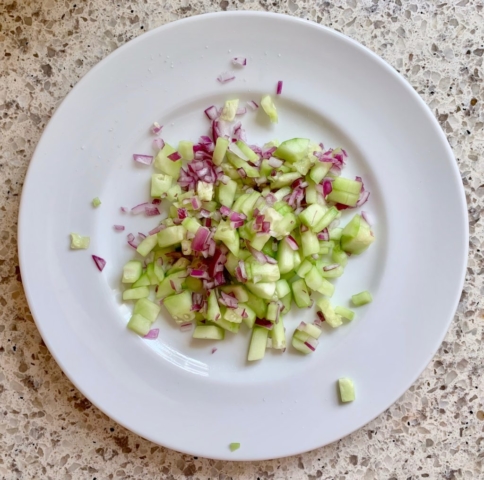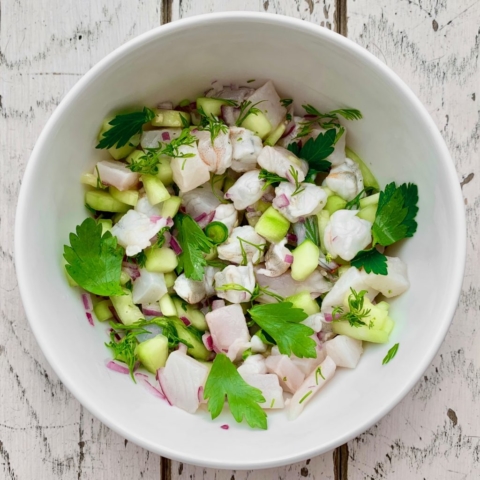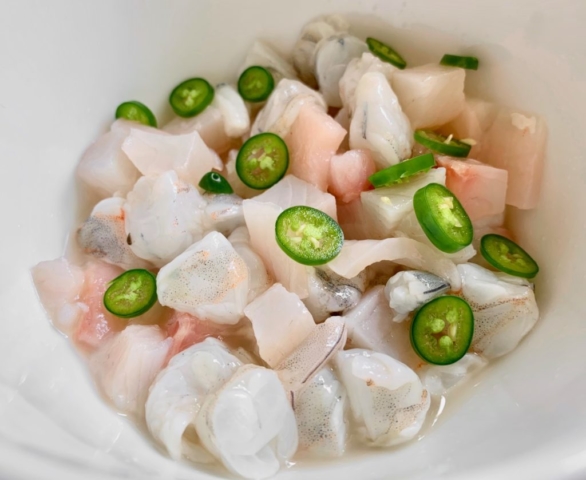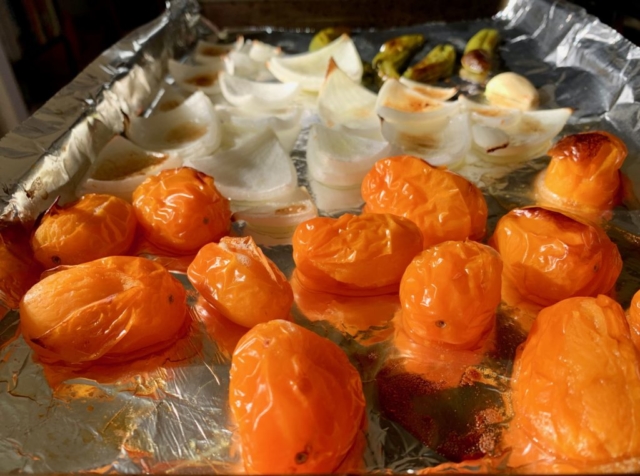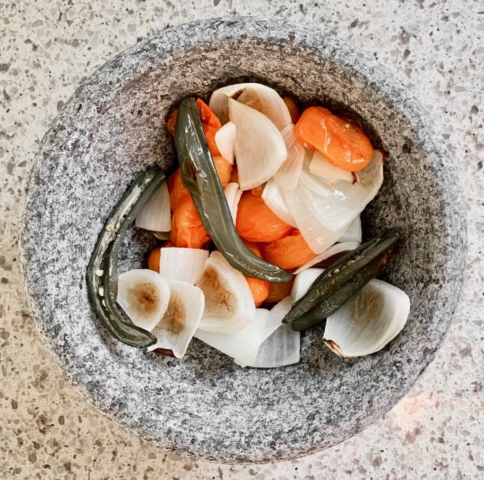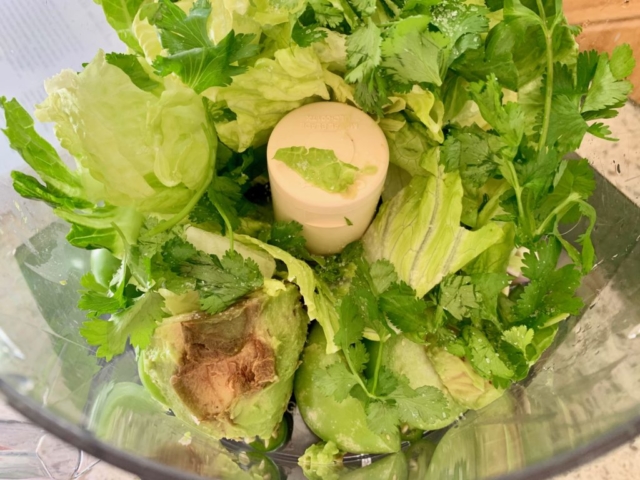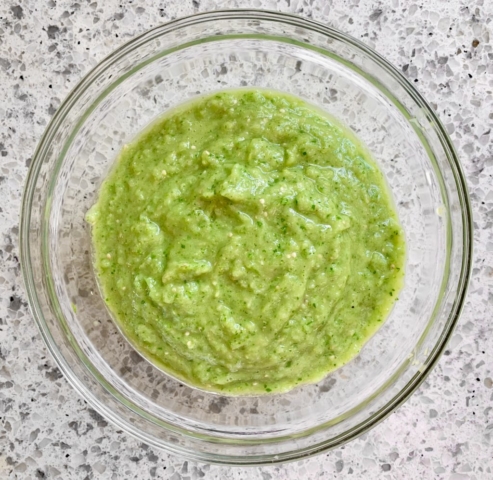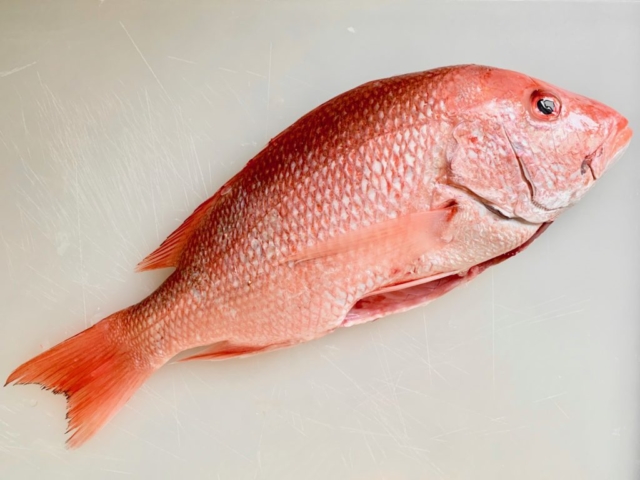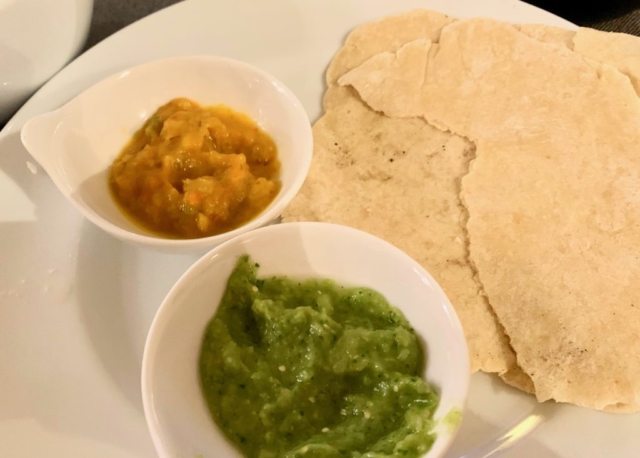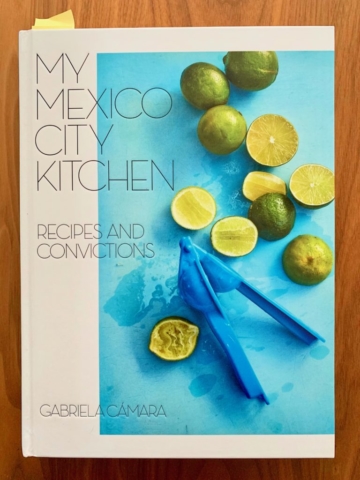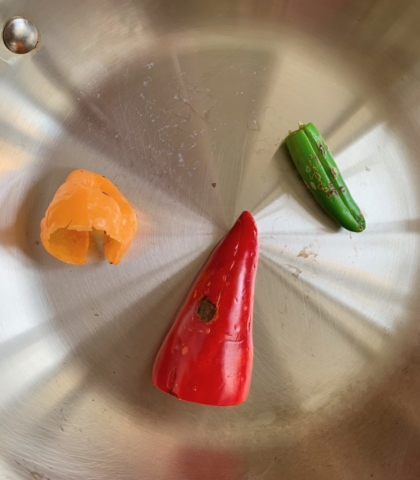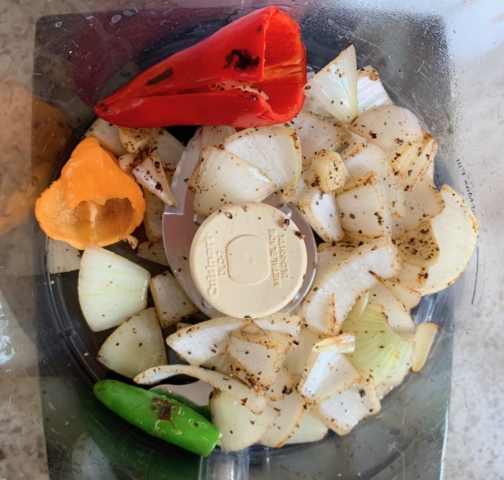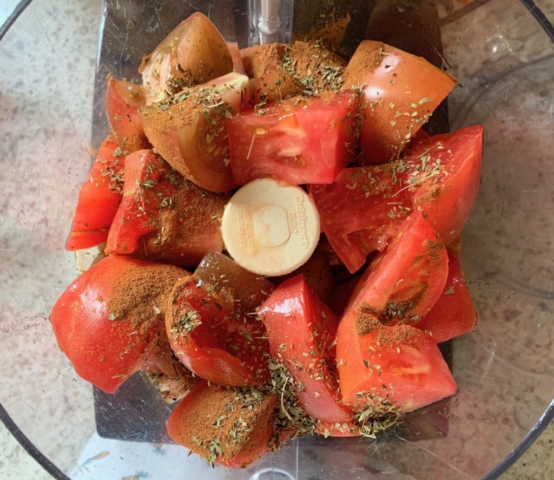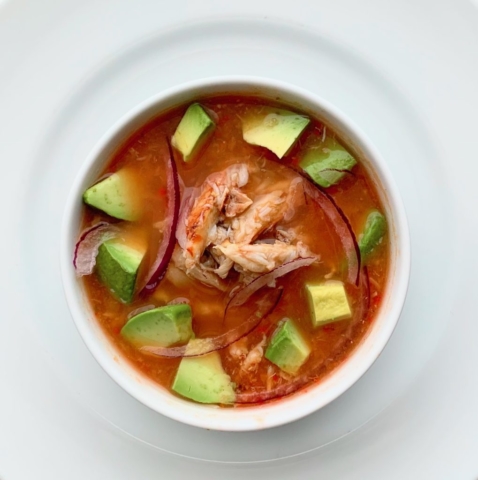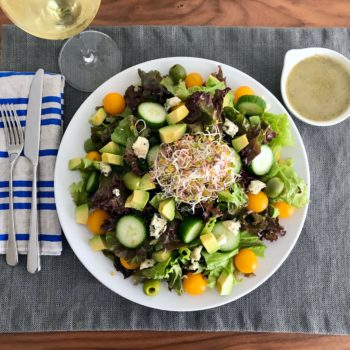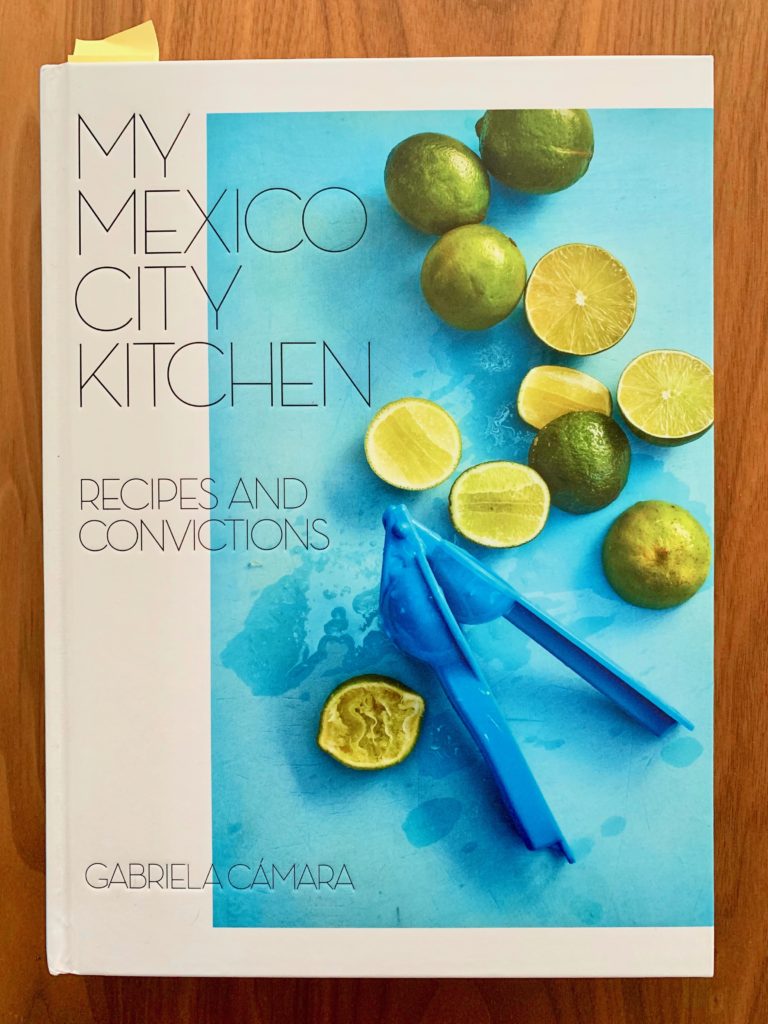
My Mexico City Kitchen: Recipes and Convictions
Gabriela Camara with Malena Watrous
Photographs by Marcus Nilsson
2019
Purchased from Now Serving in Los Angeles, who put on a wonderful event with chef Camara
Recipes cooked: Contramar’s signature red and green grilled red snapper, chilpachole de jaiba (spicy crab soup), salsa verde cruda, salsa roja asada, aguachile de camaron (y pescado!), tortillas de harina
Recipes I want to cook: Chorizo verde, squash blossom soup, yellow mole with masa dumplings
Difficulty to source: Medium to pretty difficult, actually
Difficulty to make: Easy to medium
Gabriella Camara is unapologetic about regional authenticity and the scrupulousness of it in My Mexico City Kitchen. She runs the successful restaurants Contramar in Mexico City and Cala in San Francisco. Reading her cookbook made me think about a recent conversation between David Letterman and President Barack Obama on “My Next Guest Needs No Introduction” about privilege and luck, because she credited both her upbringing, as a daughter of two academics, and her timing, finding other creatives in Mexico City as it was enjoying a revitalization, much like Los Angeles’ at the same time, at a recent book publicity tour stop here.
The book is tidily organized into basics, breakfast, finger food and first courses, main dishes, desserts, and drinks, and all recipes are listed upfront, which I always appreciate. The short anecdotes that open each recipe are helpfully contextual. The design is clean.
Spicy crab soup
The recipes do not seem well edited, though. For the spicy crab soup, for example, the chile peppers in the ingredient list say “stemmed and seeded,” and then the instructions say to remove the stems after toasting them. In the same recipe, white onion and garlic clove are listed with no instructions for how they’re supposed to be cut, if they’re supposed to be cut, and I think they were supposed to be cut, in the context. I was also surprised that the crab was only listed as 6 pounds of “fresh dungeness or other crab, cut in half and well cleaned.” The instructions go on to boil the crab. Whole Foods sells steamed dungeness crabs at the seafood counter, so, should someone buy that easily arguably “fresh” crab and follow the instructions, they’ll destroy 70 or 80 dollars of crab meat in the overcooking. It should have said “live” crab—which, unless you’re like my brother in Seattle with his own crab trap buoyed at a nearby beach, will still set you back about 50 dollars—and provided instructions for killing a live crab. I recently took a knife to a dungeness for a cookbook recipe test. It is not for the squeamish. The nervous system persisted for ten minutes, which is to say, it kept moving. And why not offer up tinned crab meat? Six pounds of dungeness yields about a pound and a half of crabmeat. Why not mention the 1 pound tins of already picked lump or claw meat? The quality is wonderful. It’s also 13 dollars.
To this end, the recipes do work, but, the ingredients will cost you. A whole red snapper is over 30 dollars at 99 Ranch in Los Angeles, a Taiwanese-American grocery chain where most other fish can be had for around 5 dollars per pound, and it fed only two. Much of the book is expensive to cook, really. She said as much, that she sources well and charges accordingly at her restaurants.
I sort of struggle with that, and so does she. She’s doing her best to make Mexican cuisine shine as brightly as it deserves to, and she acknowledges that that could seem to come at the expense of, well, immigrants doing brilliant regional food, too, only charging a dollar or two for dishes that take both hours and a lifetime to do well, because they didn’t have the opportunities she did.
I don’t love the word “elevated” for any cuisine, because it inherently suggests that that culture’s food is otherwise less-than. No food is less-than. So, I’ll call this her, interpretation. And how refreshing, really, to recalibrate our expectations of what Mexican food is, enjoying just the most beautiful Pacific coast fish, responsibly sourced. The book is a lot about seafood.
But, then, I wish I could spend considerably more for the tender, long-marinated tongue taco on a blue corn tortilla with bright oniony pico de gallo and a handful of fresh cilantro from a late night street corner vendor here than what’s asked of me, too.
—Because, my favorite recipe, of what I made from her cookbook? The flour tortillas with pork lard, from her childhood, probably about thirty cents worth of ingredients. You’ll have to read the story, because it’s a beautiful book brimming with stories I enjoyed reading and recipes I’d love to make. All authentically hers.

